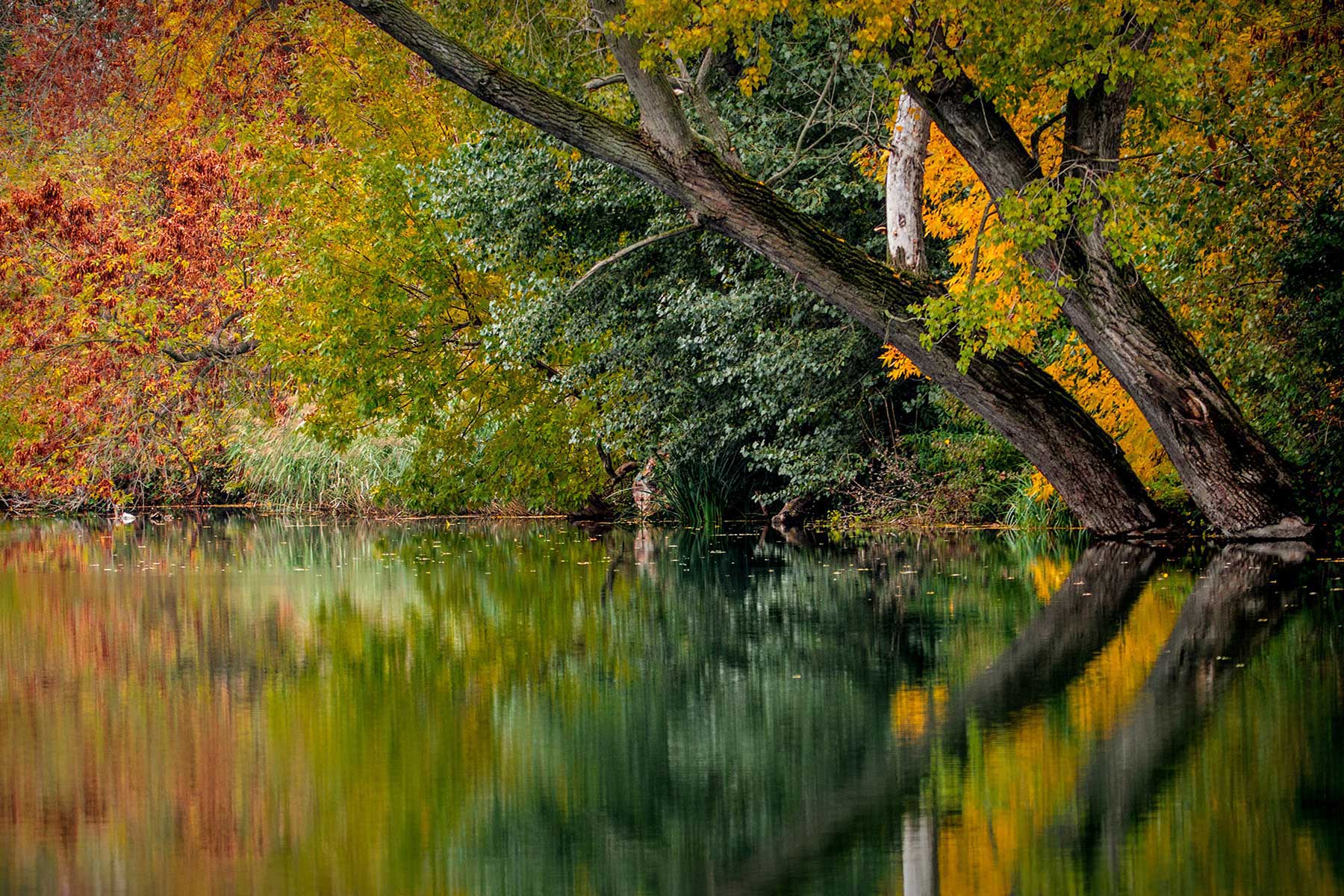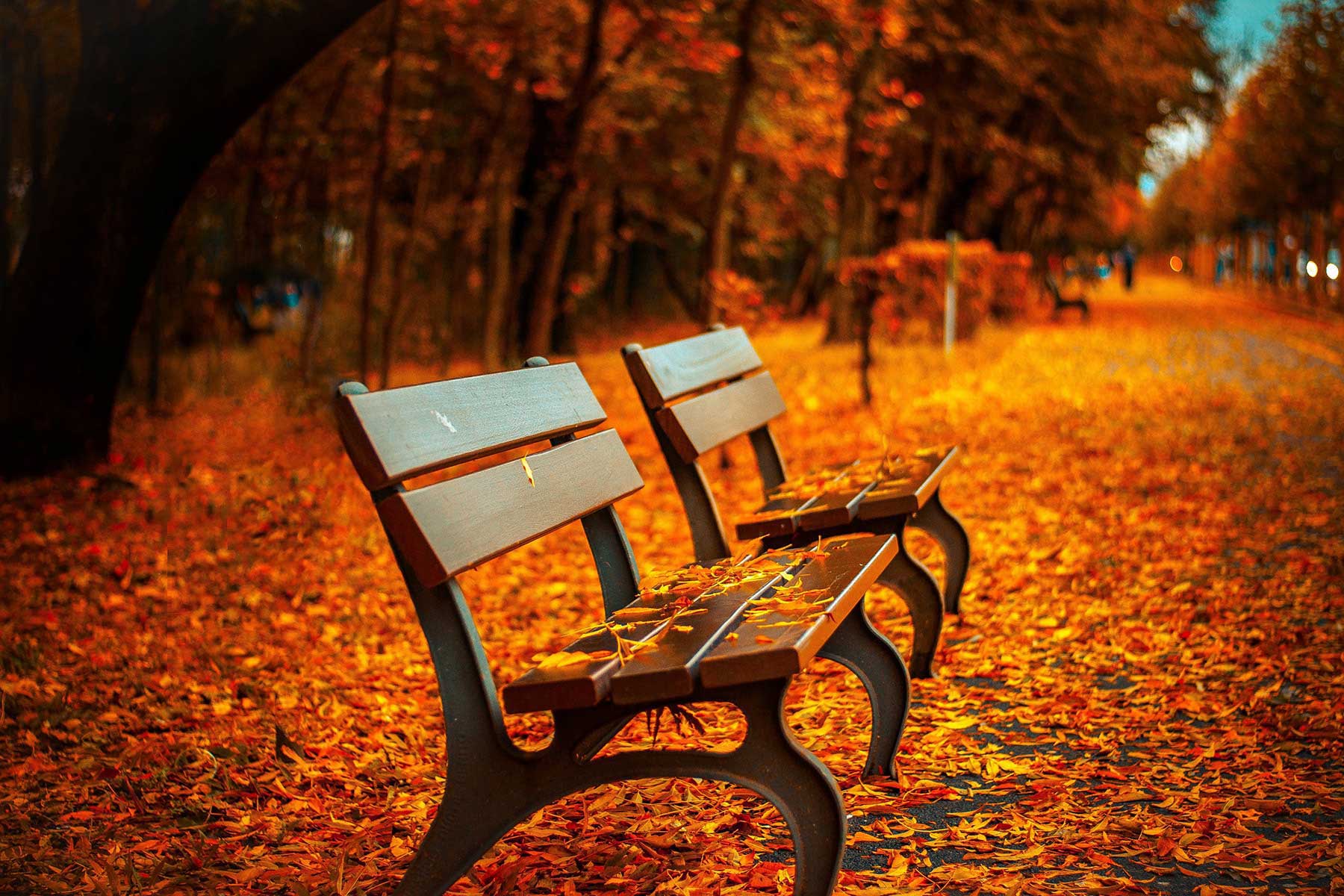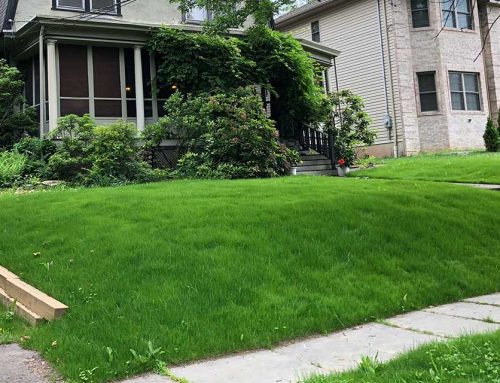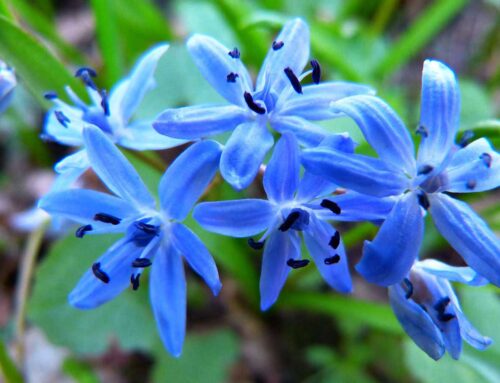Tree Dormancy
What happens when a tree goes dormant?
Autumn foliage; it is the perfect time to don a sweater, grab a cup of pumpkin-spice latte, spend some time outside and become mesmerized watching the swathes of green trees fade away–replaced by dazzling amber, maroon, gold and bronze hues. That is the must-see moment of the fall. Common deciduous trees that put on this display of colors include several species of ash, aspen, beech, birch, cherry, elm, hickory, hornbeam, maple, oak, poplar and willow.
Deciduous trees go through a period of inactivity, known as dormancy, during the winter months. Dormancy is brought about by decreasing day length (photoperiodism), cold and sometimes by drought conditions. Come Autumn, trees form their winter buds and begin the production of a hormone, abscisic acid, which causes the leaf drop enabling the tree to enter dormancy for the winter. At the onset of fall the concentration of abscisic acid is at its peak and as longer periods of cold temperatures occur it slowly diminishes. During the initial phase in early autumn the trees draw inwards and down the valuable nutrients from the leaves and stores for later use within the root structure itself.
One of the first nutrients broken down is the chlorophyll, the pigment that gives leaves their green color. While doing so the leaves turn to reds, oranges, golds, yellow, and so forth. It takes a tree on average 60 days of below 40 degree temperature for the abscisic acid to break down enough nutrients to enable the tree to leaf out again when climatic conditions are favorable again. This cold degree day requirement can be predicted by a trees hardiness zone; which is why the native trees in New Jersey do not begin breaking bud should a temporary warming period arrive in mid-January, for example. Native trees cannot be tricked out of dormancy so easily since they have become adapted to their natural surroundings. Trees planted outside their hardiness zones may not be so wise, however. Often, these non-native trees may break bud too early and think that spring has arrived in January. Henceforth, the use of native trees and plants is the only true way to achieve sustainable landscaping as Mother Nature provides it.
Another process that the tree undergoes in late summer and fall is the conversion of excess sugars to starch and the storage of the starch in the woody tissue and the root system. This starch is the energy reserve that the trees require to function when they are dormant, break bud and to grow new leaves in the spring. This stored starch is broken down by rising temperatures so that when warmer temperatures arrive, the newly converted sugars help power activities inside the tree.
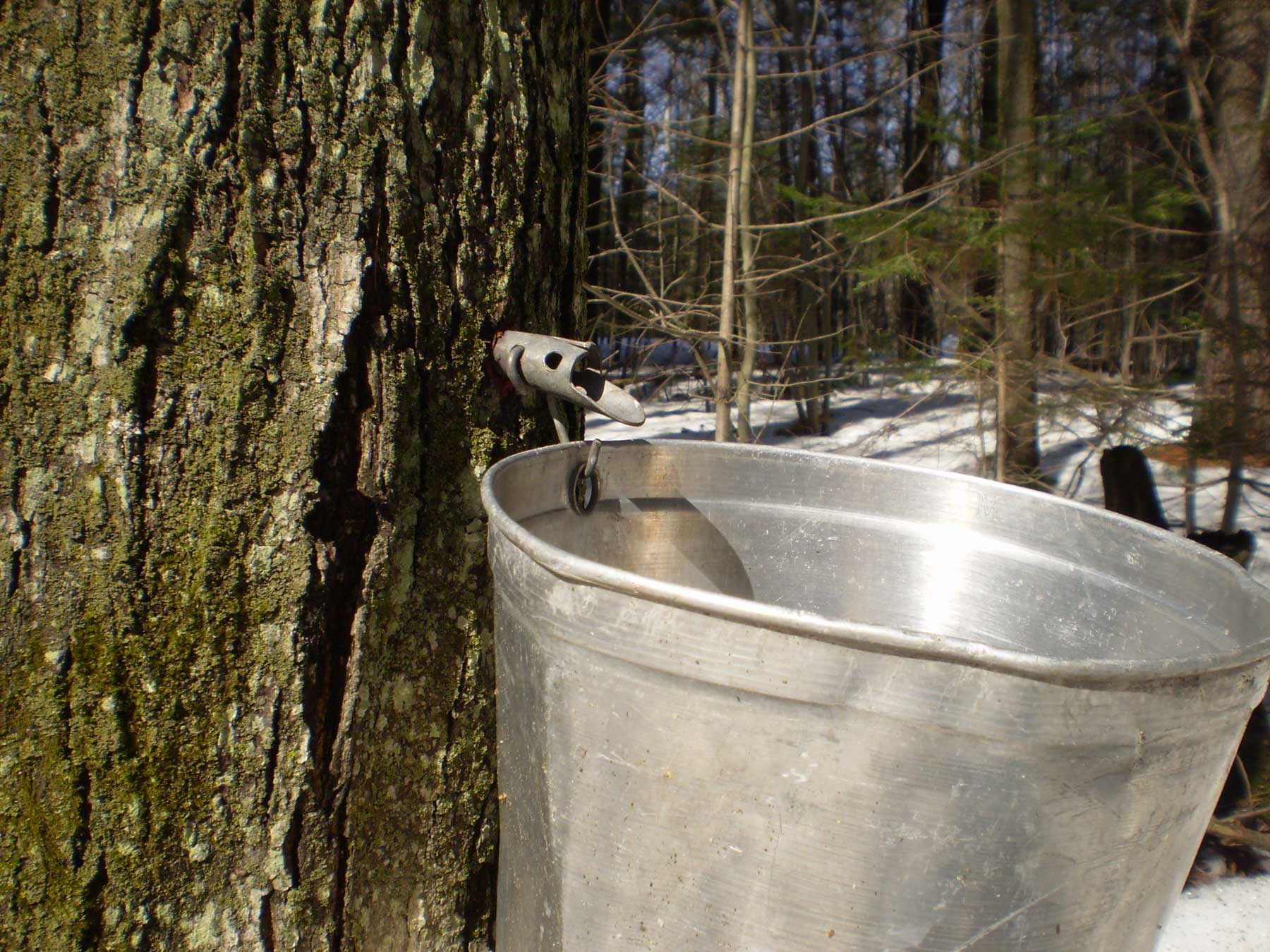 During late winter and early spring, the weather can fluctuate so much that during the daytime the temperatures are warm but then cool off to below freezing over night. This warming and freezing cycle creates a build up of pressure inside the tree during the day and then a reduction of pressure at night. The end result being that overnight the suction in the roots draws water into the tree and as a result this build up of pressure forces water and sugars up the tree during the day, resulting in what is knows as sap rise.
During late winter and early spring, the weather can fluctuate so much that during the daytime the temperatures are warm but then cool off to below freezing over night. This warming and freezing cycle creates a build up of pressure inside the tree during the day and then a reduction of pressure at night. The end result being that overnight the suction in the roots draws water into the tree and as a result this build up of pressure forces water and sugars up the tree during the day, resulting in what is knows as sap rise.
Harvesting sap is a weather-specific ordeal. Sap is gathered the easiest when it “runs,” which is when the daytime temperatures are between 32 and 45 degrees, but the nights are below freezing. The sap that courses through a tree can be highly beneficial. Maple, birch, and walnut saps are regarded for their healthy properties that include minerals, enzymes, antioxidants, and nutrients to name a few. Birch tree water or sap is considered one of the best juices to drink. Slightly sweet and with the consistency of thin syrup, it contains xylitol sugars, proteins, enzymes, and amino acids. Birch also has amazing healing properties, detox effects, and benefits for certain organs in the body, such as the liver and kidneys. Also, birch cellulite oil is reported to help eliminate cellulite over time.
Residential – Commercial – Estate Property Management Services
At Lincoln Landscaping cultivating the environment is our life and livelihood. We create eco-systems. It is our number one goal to help our clients create and maintain beautiful landscapes while reducing the impact on the environment. Whether you are interested in a pollinator landscape garden design and build or other landscaping or property management project; we can create for you an environmentally friendly, organic and beautiful property.
Together with you, we create sustainable Eco-Systems. As the Navajo Indians would say “Yua Tah Hey”
Lincoln Landscaping “The Natural Choice”
Mike Kolenut President & CEO
https://lincolnlandscapinginc.com
(201) 848-9699


